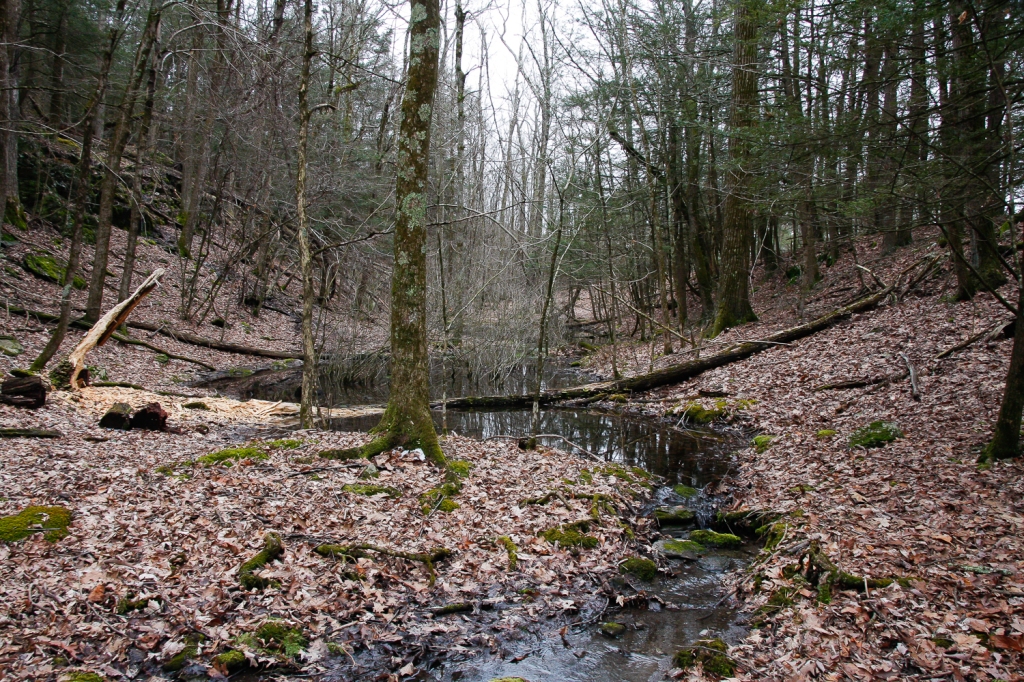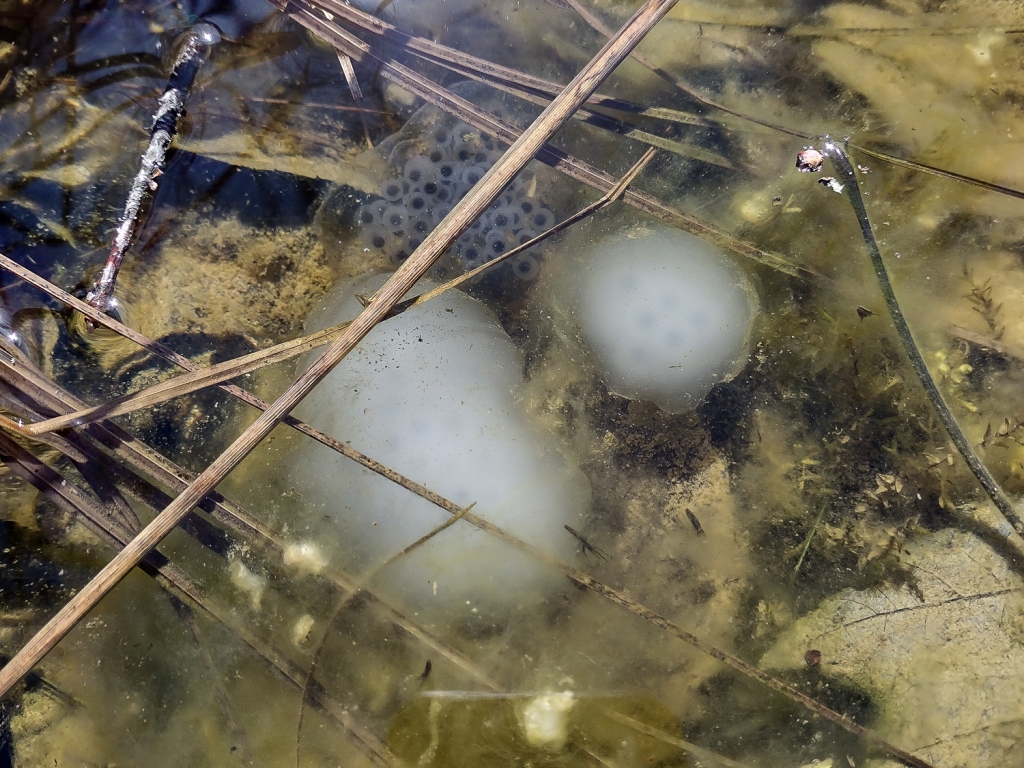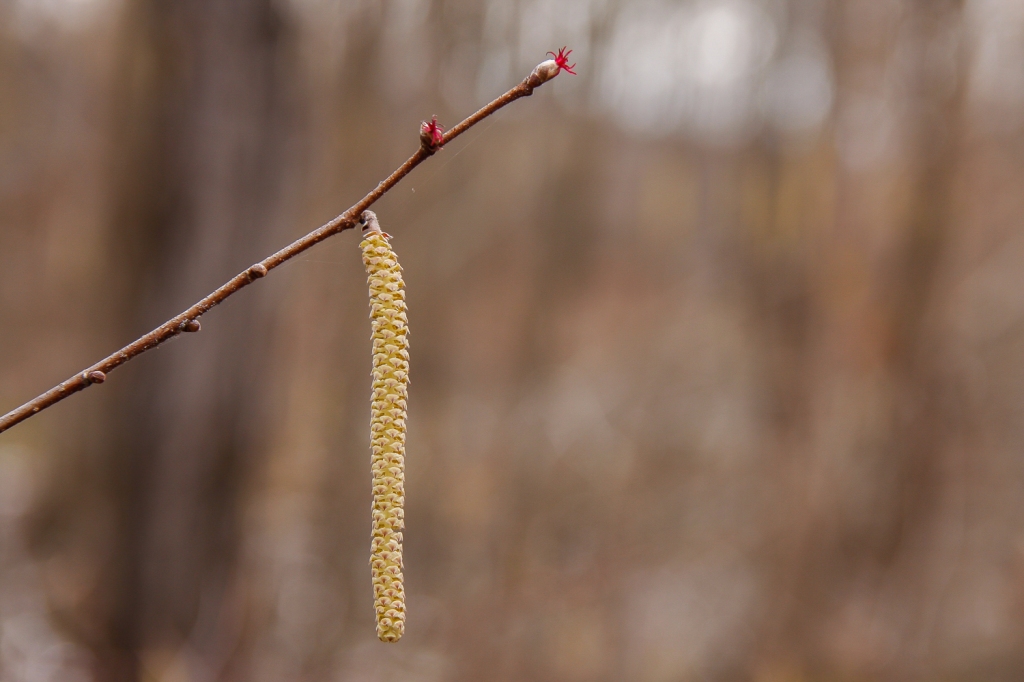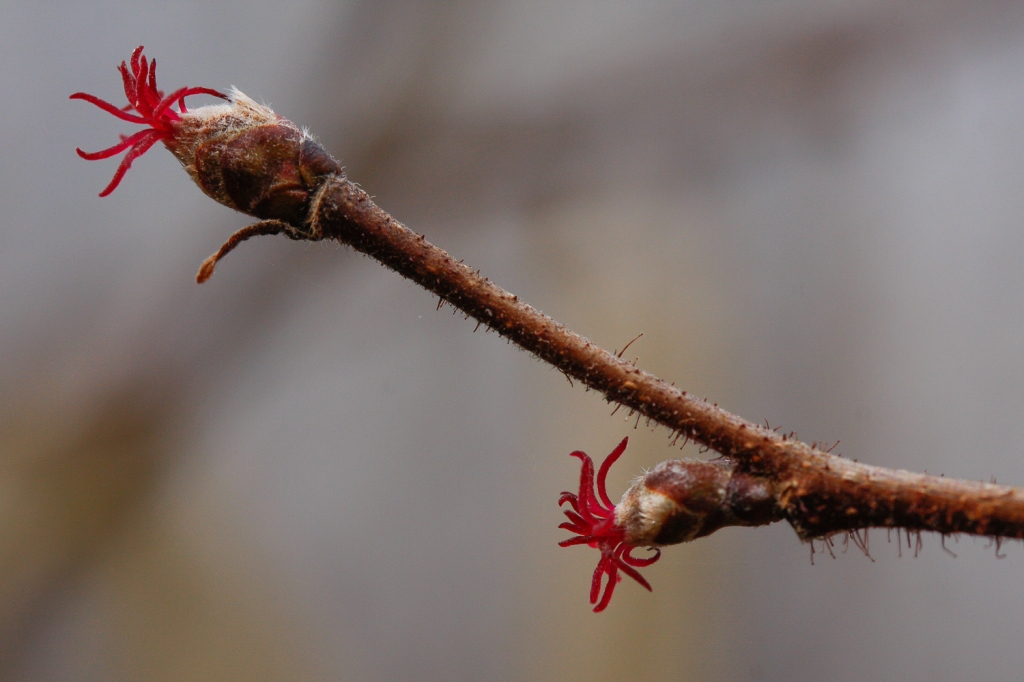Amphibians and Hazelnuts
By Kyle Bradford
In the last few weeks, field season has slowly kicked off and I’ve had a few opportunities to nose around for amphibian breeding activity and observe other signs of spring.

This year the first amphibian movements from upland forests to breeding habitat (e.g., vernal pools, ponds, wetlands) happened as early as the last week of February. However, this didn’t seem to produce a large migration event and the weather turned colder for much of March. More migrations are likely during the next month. If we have spring rain during nights that are 40 degrees F or warmer make sure to watch out for migrating amphibians on roadways!

Josie Laing, our botany technician, found this Wood Frog (Lithobates sylvaticus) crossing a roadway on 28 February 2024 in Hillsdale.
Two common amphibians that lay eggs in vernal pools and other, fishless, aquatic habitats are Wood Frogs and Spotted Salamanders (Ambystoma maculatum). Their egg masses are easily distinguished from each other in the field. Wood Frogs have lots of eggs in their mass (up to 1500), whereas Spotted Salamanders usually have fewer than 150 eggs in one mass.

Notice the large number of black eggs in these Wood Frog masses.

Wood Frog egg masses don’t have a thick gelatinous coating, and they can appear lumpy, looking like bubbles on the surface of the water.
Spotted Salamander masses have a thick jelly coating, which helps them fend off some egg predation from aquatic insects and even Wood Frog tadpoles. Spotted Salamander masses can be white and nearly opaque, which can make the masses easy to see and distinguish from other species in a pool.

Both clear and white egg masses of Spotted Salamander from a swamp forest in Kinderhook.

Another aquatic predator of amphibian eggs is the Eastern Newt (Notophthalmus viridescens) and I saw a few in beaver marsh and pond habitats during the last few weeks. Most people are familiar with the Eastern Newt’s orange juvenile stage (Red Efts) that roam the forest on wet ground. After the juvenile stage, Eastern Newts transition to a more aquatic life for breeding in wetlands and ponds. Their orange-colored skin turns olive on top and yellow with black spots on the belly. The tail becomes enlarged and flattened making it more suitable for swimming. The adults are long-lived (5-15 years) and most overwinter on land, returning to wetlands and ponds in late winter or spring.

A better look at the adult Eastern Newt’s yellow belly and black spots.
Besides amphibian breeding, another telltale sign of spring is hazelnut blooms. Hazelnuts are some of our earliest flowering woody plants and I always look forward to seeing them in spring. The female flowers are dainty and can be hard to spot. Fortunately, the male catkins are conspicuous and alert one to take a closer look to find the small, red, female flowers popping out of the buds. In Columbia County, we have two species, the American Hazelnut (Corylus americana) and the Beaked Hazelnut (Corylus cornuta). Both species are wind-pollinated so they don’t have to rely on animal pollinators, like insects, to do the work. One reason why these plants can flower so early!

This American Hazelnut had an impressive display of catkins in bloom.

A closer look at a catkin and two female flowers of American Hazelnut.
American Hazelnut is considered uncommon in the county whereas Beaked Hazelnut is a more regular resident of the forest understory. American Hazelnut seems to like sandier, more open, disturbed habitats.

One way to tell the difference between our two hazelnuts is by looking at the hairs on the twigs. The American Hazelnut has thick, red hairs with glands on the end.

In comparison, Beaked Hazelnut generally has sparse, thin, light-colored hairs on the twig.

Beaked Hazelnut with catkins that have yet to open up.
Do you have any flowers or other biological phenomena that you look forward to observing every spring?
